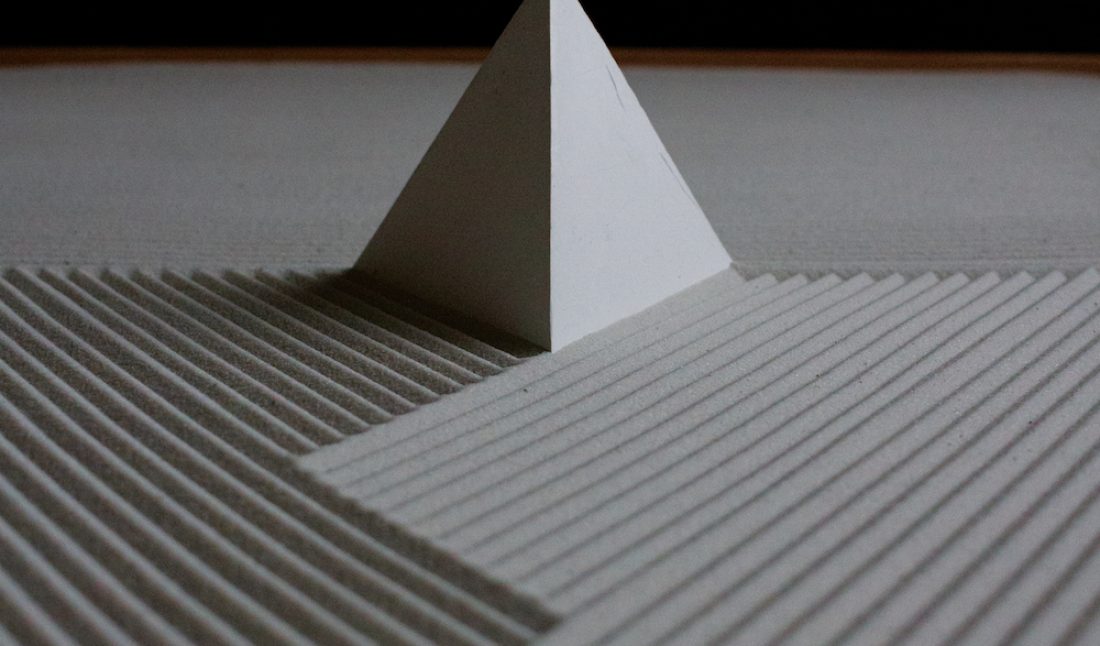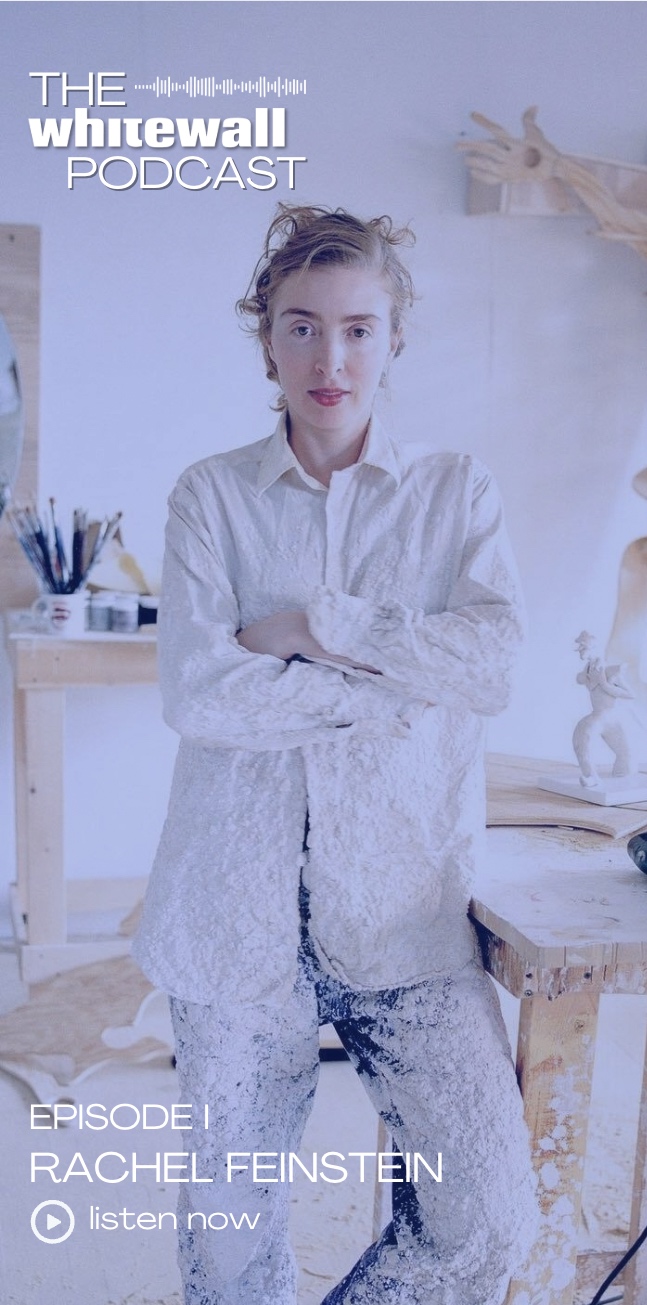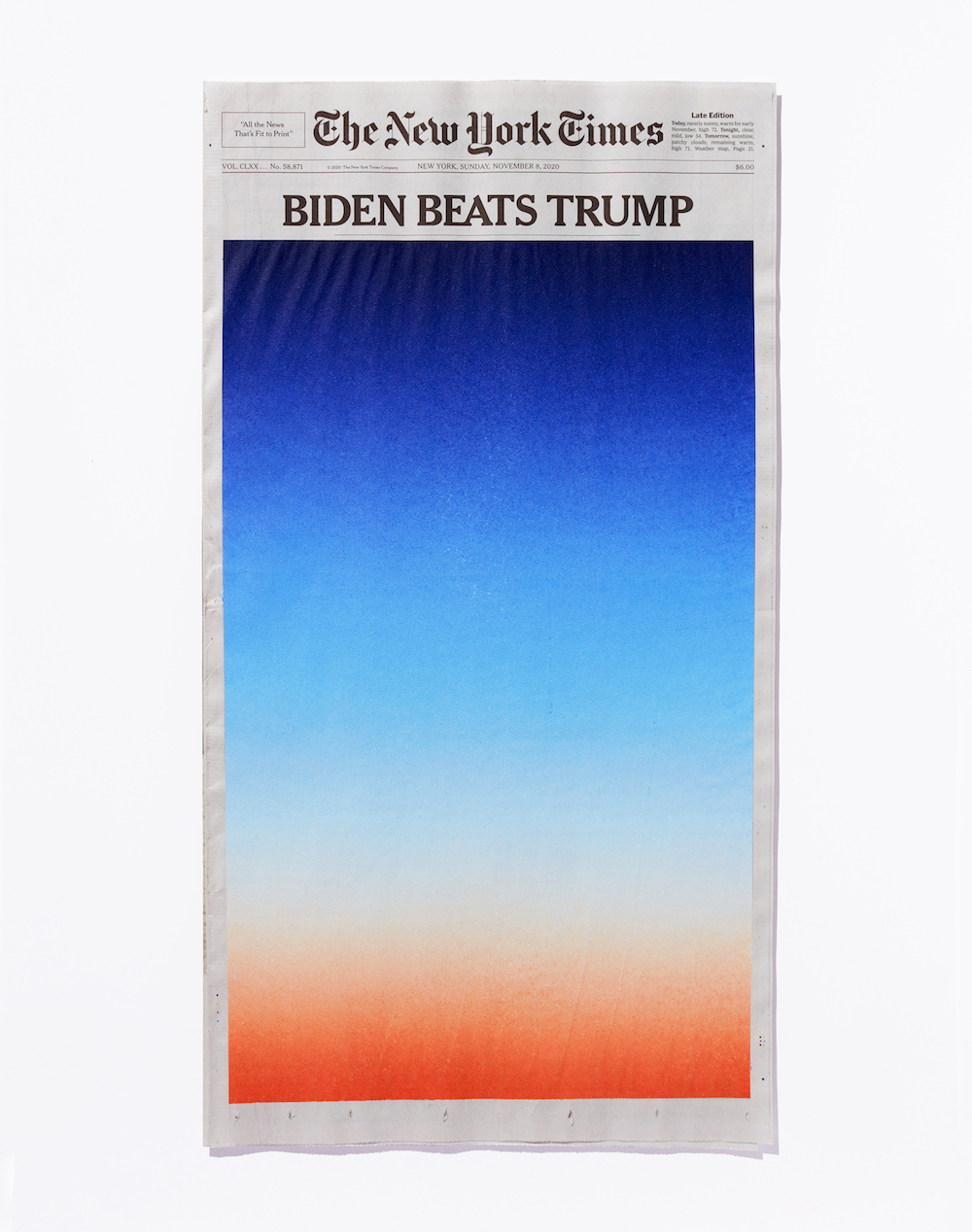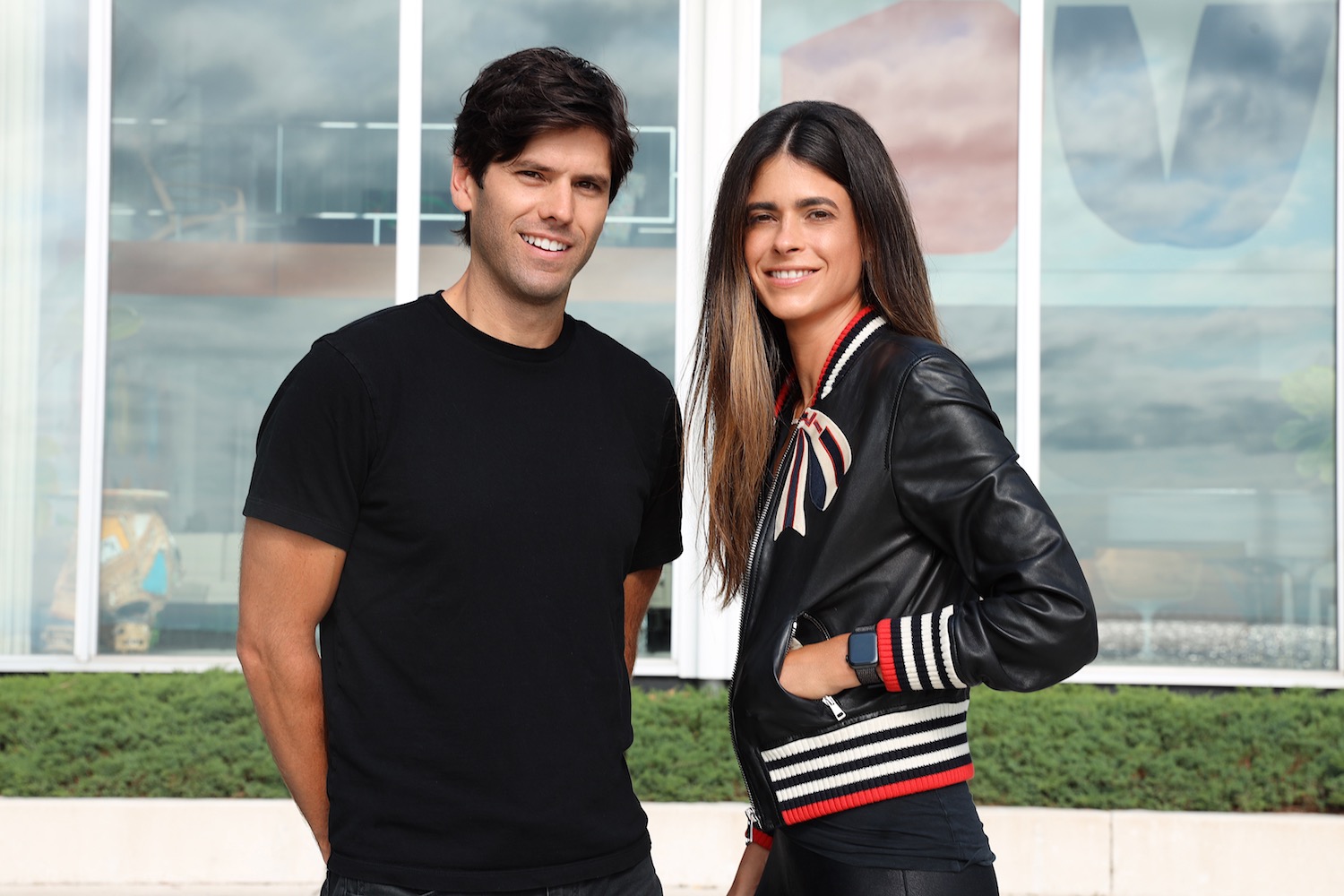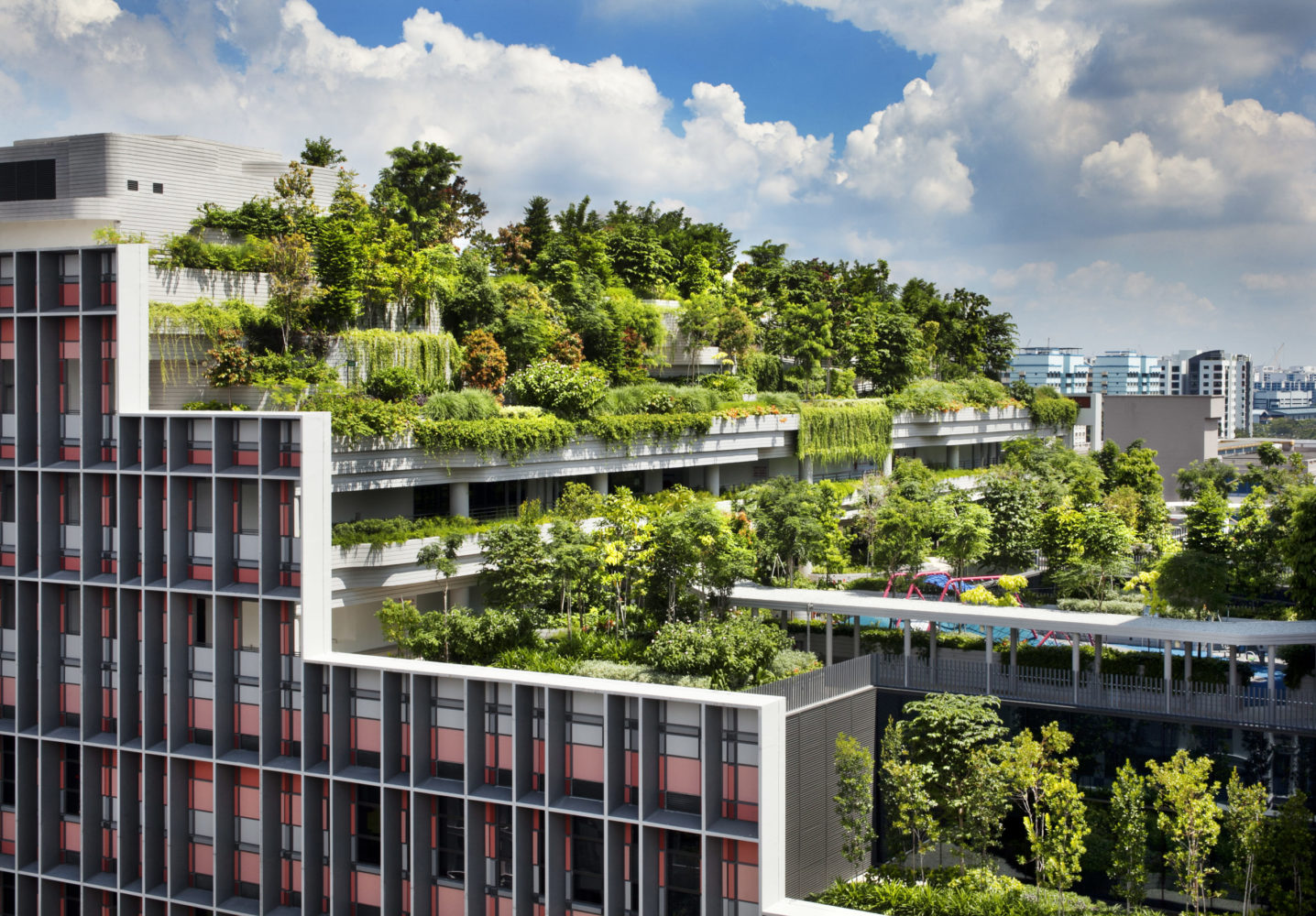A few years ago, the artist and designer Yuki Kawae started caring for a small fiddle-leaf plant. As he misted its leaves each day, watching it grow, he realized how the simple act of looking after a houseplant could calm his anxieties and worries. That led to a dream of making a wabi-sabi-inspired Zen garden, created to fit in his apartment—a dining-table-sized garden.
Crafting his own tools and using rocks and other objects as a starting point to mark patterns in the sand, he began uploading videos of making the Zen garden that became wildly popular on Instagram during the pandemic, as we all searched for ways to find peace in a time of chaos and unpredictability.
Whitewall checked in with Kawae early this year to learn about his ongoing Zen garden series and how it has connected him to others.
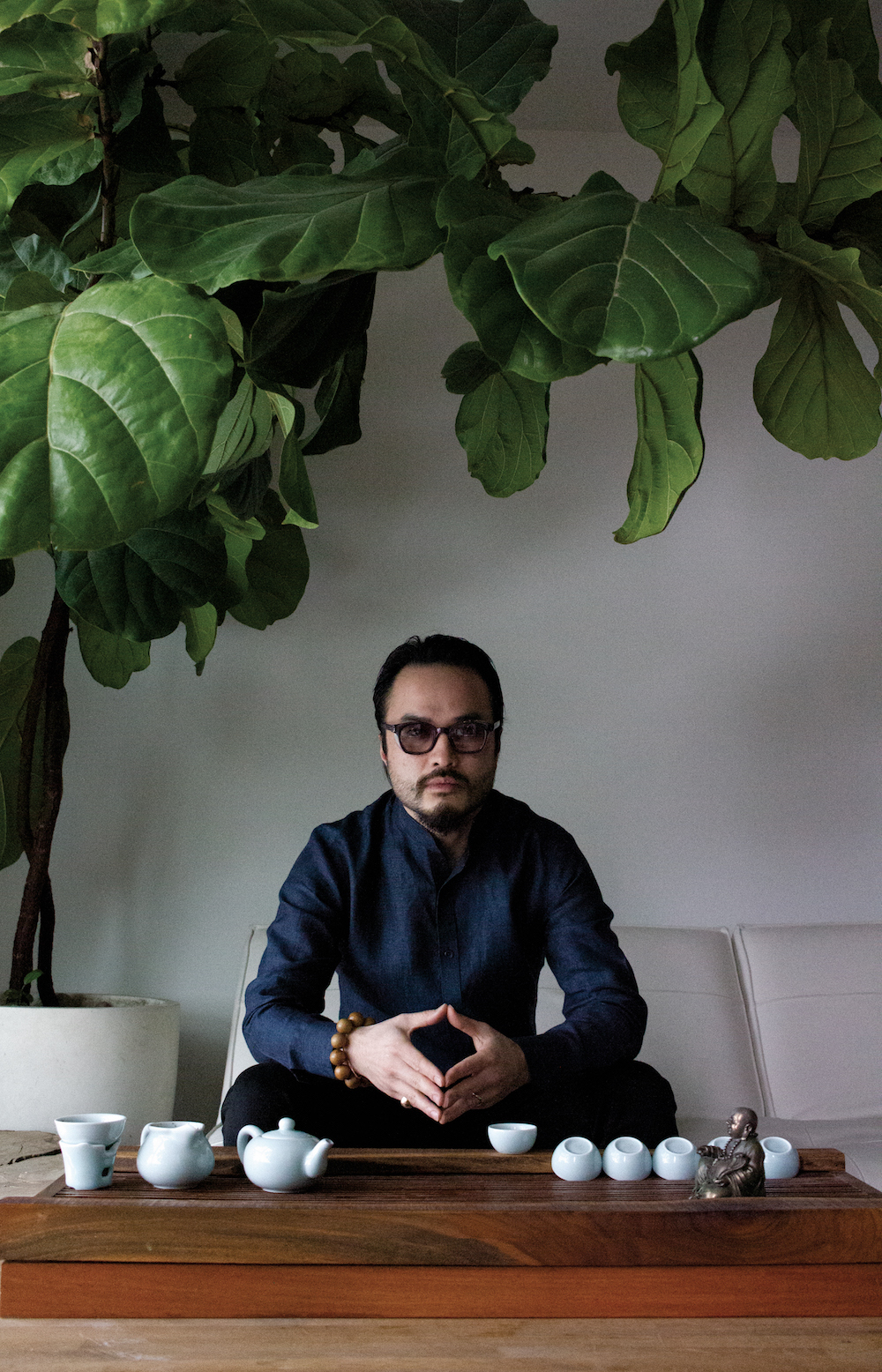 Yuki Kawae, courtesy to the artist.
Yuki Kawae, courtesy to the artist.
WHITEWALL: Do you see the Zen garden practice as a meditative or creative outlet?
YUKI KAWAE: Both. Art was always a big part of my daily process. It used to be that I poured energy into woodworking, but with restriction of space availability, I started painting and creating the Zen gardens. As for meditation, I personally think meditation can be found in many forms of practices—cooking, playing music, running, painting, et cetera—when you are so focused deeply on one task that you get rid of any distraction or thoughts. Zen gardens helped me for that, especially since it requires a lot of attention to movements. It is also meditative to know that whatever pattern is being created is impermanent. The thought of no mistake in this practice is a nice addition. The time of being clear-minded is the true value behind this work.
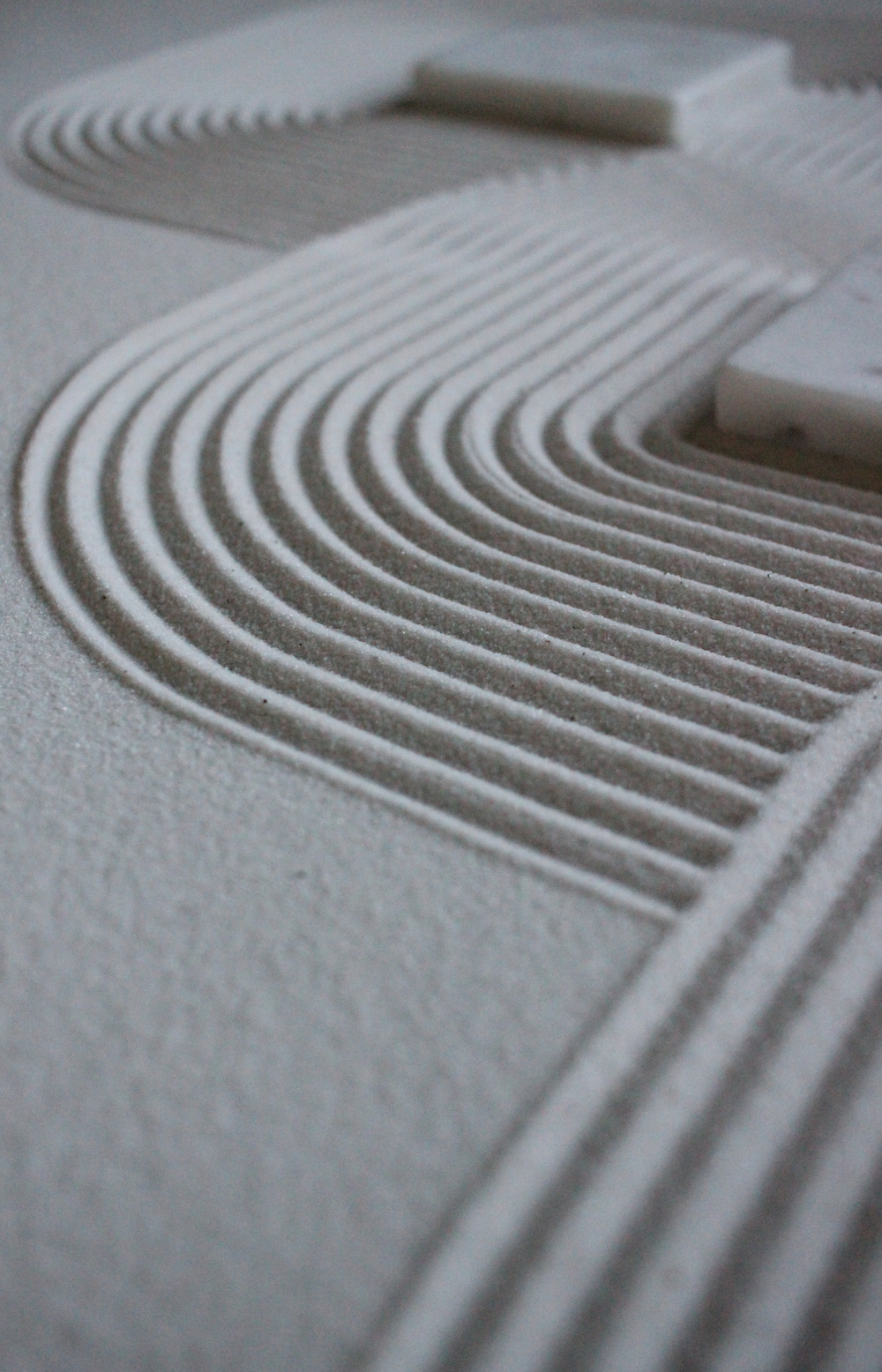 Yuki Kawae, courtesy to the artist.
Yuki Kawae, courtesy to the artist.
WW: The videos of your Zen gardens have become quite popular. How has the reaction and reception impacted your creative practice?
YK: It used to be that I was just doing it for my personal clear-mindedness, but because I understand that people also enjoyed viewing it, too, it motivated me to do more of it. It blew my mind to read the positive comments—how it helps with headaches to insomnia, et cetera. This is the least I can do to help as a person in the creative field, and I am truly glad to be able to help as I know how hard it is to stress all the time.
WW: How are you inspired by nature, mathematics, sacred geometry, astronomy? And what is inspiring you most at the moment?
YK: Every time I see the ocean waves, it’s hard to describe but it just puts me in a state where I feel just grateful. Continuous motion of waves hitting the shorelines, knowing that these waves will continue even after I leave this beach, is such a comforting thing.
The more closely I look at plants leaf details or water droplets’ rings, the mathematics is everywhere. As for the sacred geometry, I am just overwhelmed with what I have found so far. From Buddhist references to chanting, a number of meditative practices to geometry degrees, the numbers seem to align. From the micro levels of cells to macro level of astronomy, I am just astonished by similarities in patterns.
Exploring the Zen garden patterns with limited wooden tools which I make myself lets me explore and wonder about these topics in a simplified format.
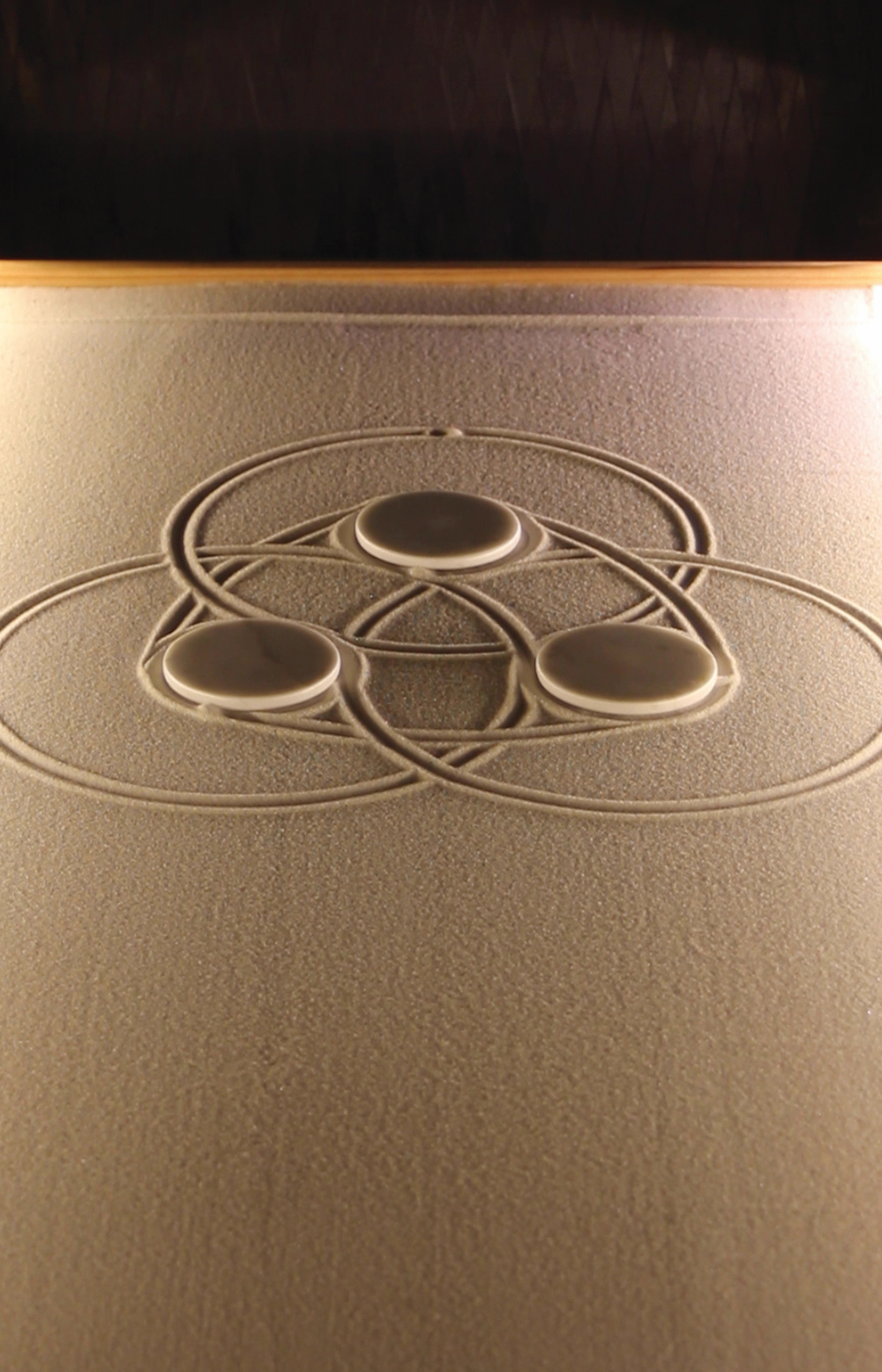 Yuki Kawae, courtesy to the artist.
Yuki Kawae, courtesy to the artist.
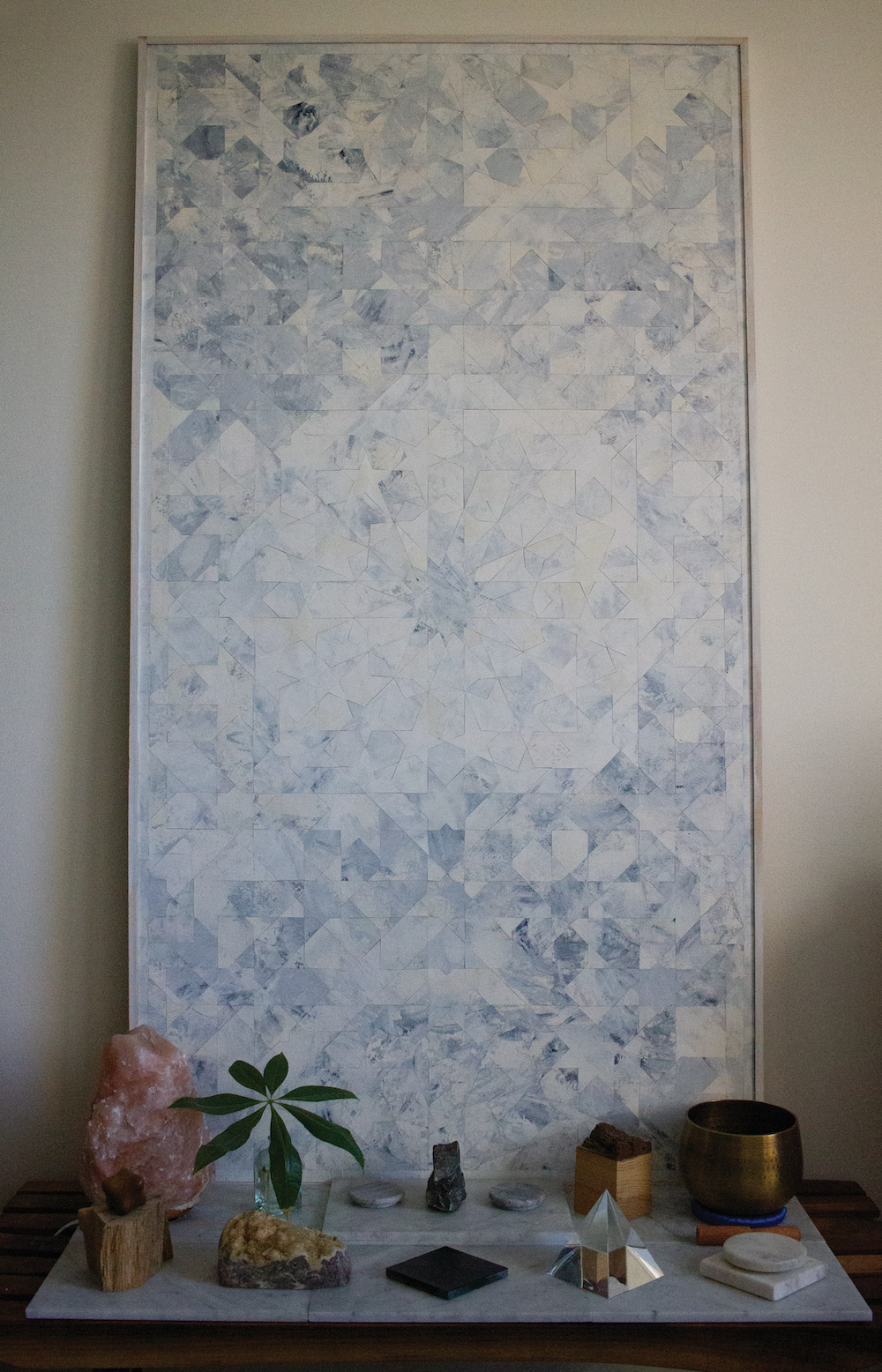 Yuki Kawae, courtesy to the artist.
Yuki Kawae, courtesy to the artist.
WW: How do you see your Zen garden practice relating to your paintings and wood furniture?
YK: I always react to situations with different creative expressions, but I like to create things that are consistent in aesthetic and concept. The mediums do change due to restrictions. For example, when I lived in the East Coast, woodworking was readily available for me and I enjoyed making wabi-sabi-inspired furniture. I did so for couple years, then I moved out here to the West Coast. Especially in the Bay Area. Renting a wood shop was too expensive, so I decided to paint. Most of my paintings are about the ocean in different times of the day. I do believe the paintings have a similar aesthetic to the wooden furniture. Just like that wooden furniture is one part of my process, as well as paintings is one, and now the Zen garden. I hope to combine all of that into one space one day.
WW: What kind of environment would you create?
YK: I envision a space where there is a large Zen garden space lit with natural light from above. Perhaps two small gardens on the side, accompanied by large-scale paintings and sculptural works. Perhaps I’d ask a few friends to showcase their works too with a few large-scale rocks with moss and lush greenery. There’d be a kung fu tea ceremony at high noon, evening musical performances by musicians whom I admire. It would be enjoyed by friends and family, and new friends who visit. The garden would close along with the moon set time. I think it would be a wonderful experience.
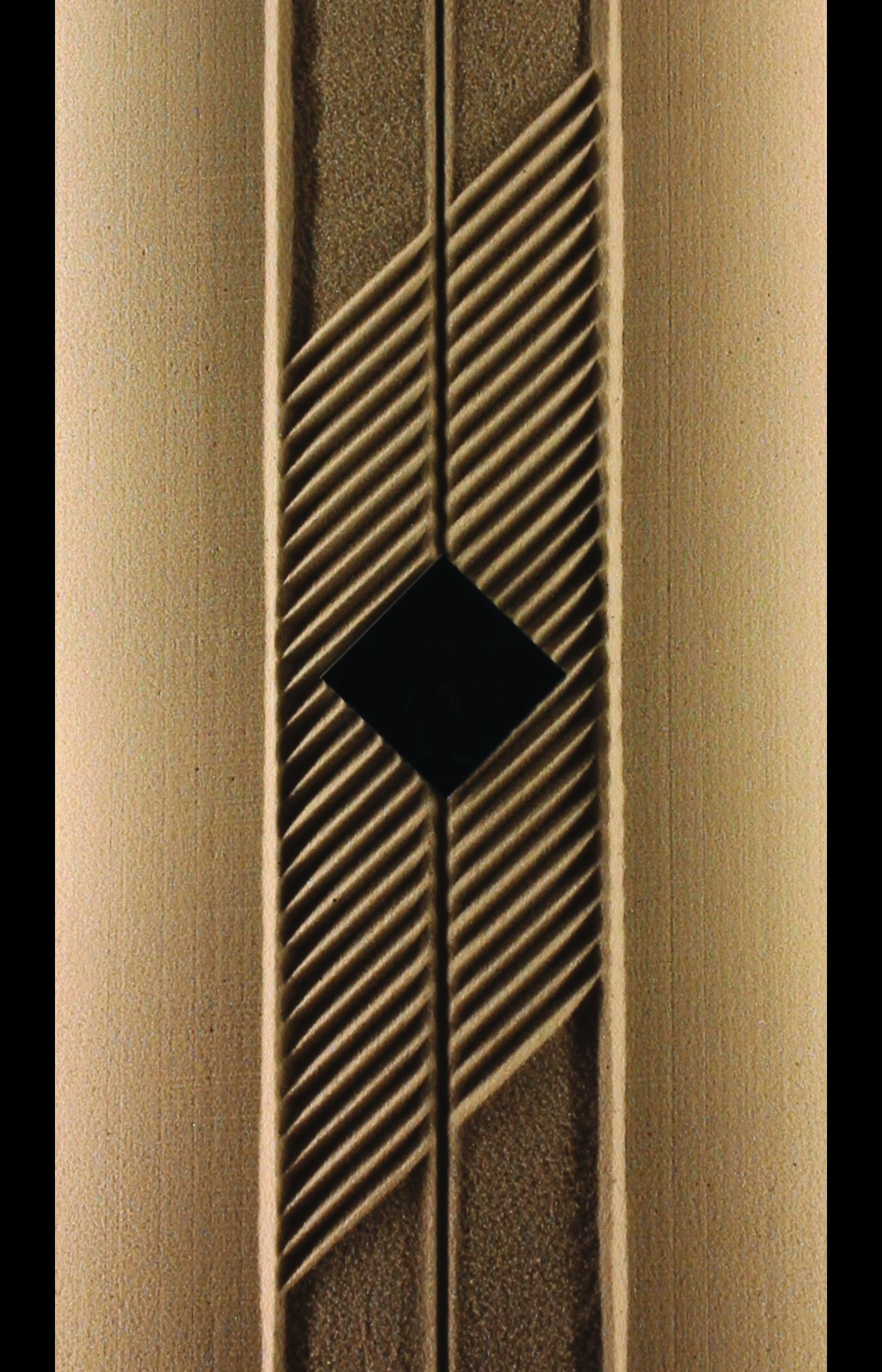 Yuki Kawae, courtesy to the artist.
Yuki Kawae, courtesy to the artist.
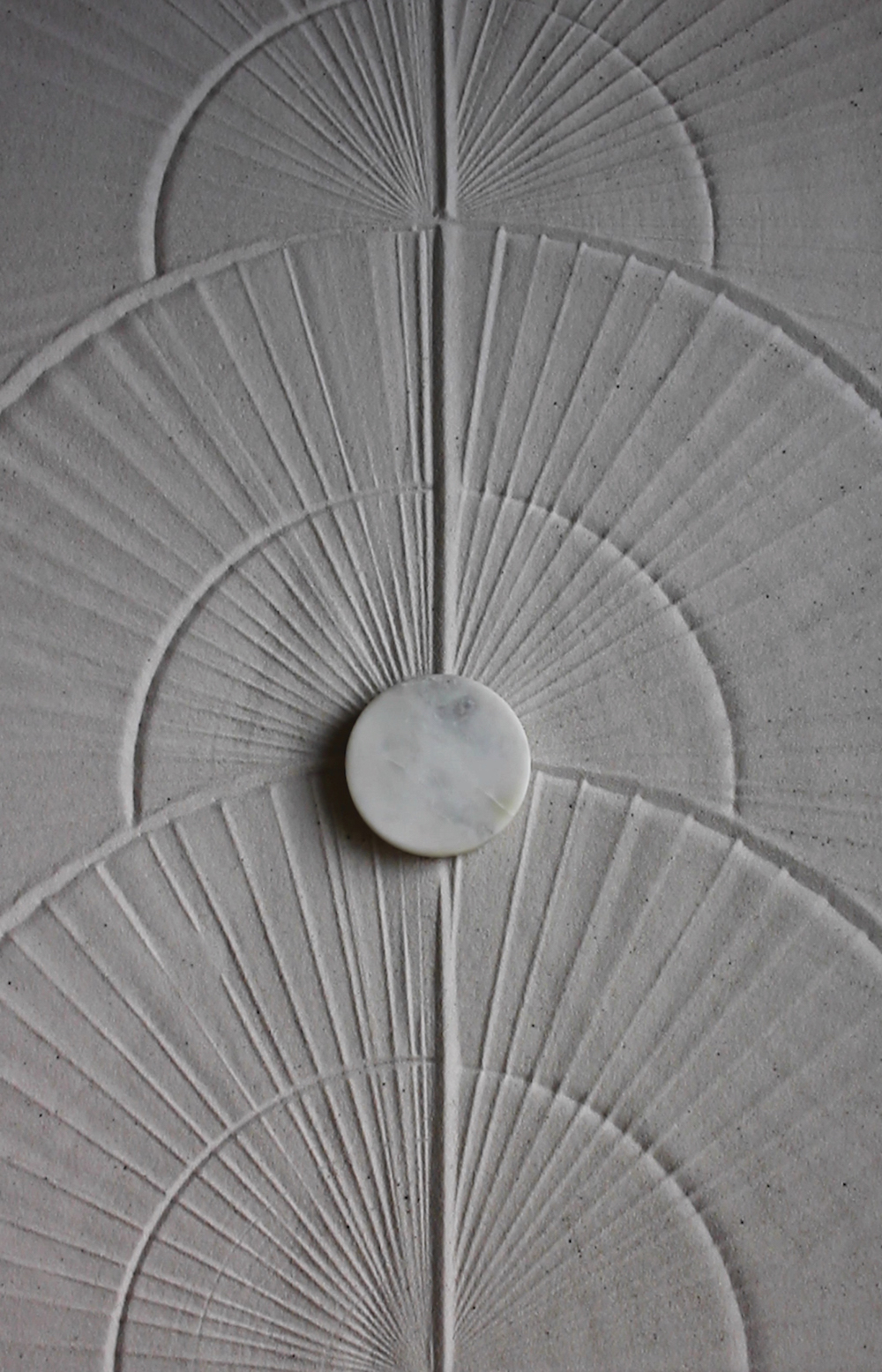 Yuki Kawae, courtesy to the artist.
Yuki Kawae, courtesy to the artist.
WW: What positives have come to you personally from taking the time and space to quiet your inner noise?
YK: Knowing how most things in life are impermanent, whereas relationships with family and friends are forever. This practice helped me gain a few moments of complete clear-mindedness where I am not thinking about anything else. And the biggest positive of all is being able to share the work and be a little help to others, even just for a few minutes. If I could help someone out there who is overthinking, and if this video could stop that train of thought, I’ll be happy.







